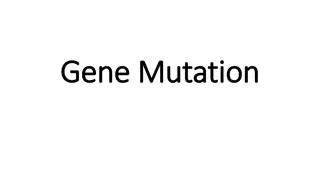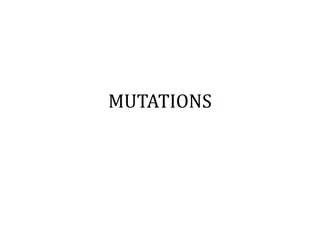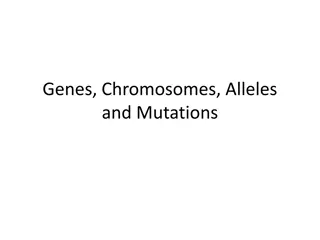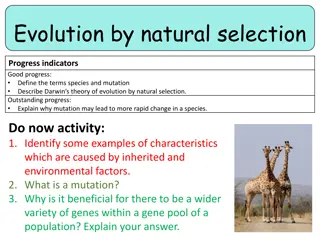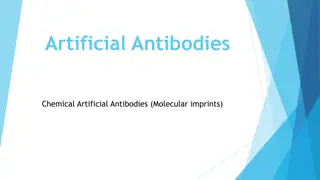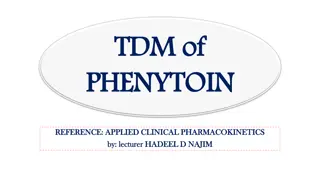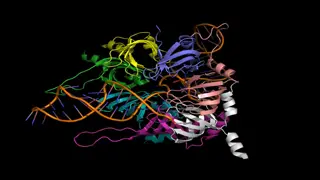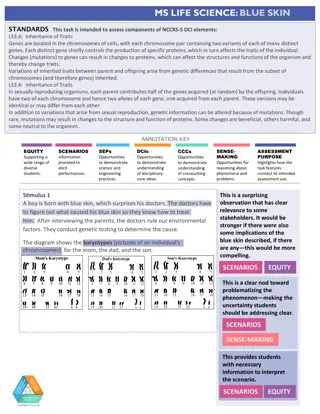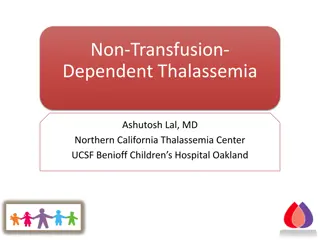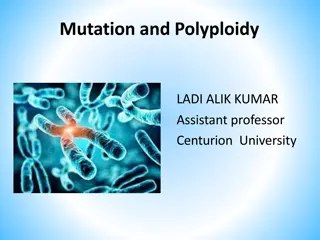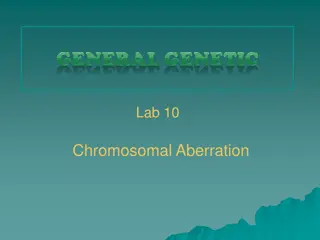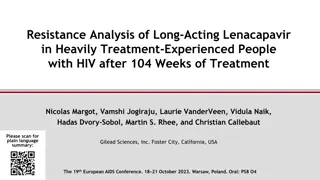Mutations in Coenzyme Binding Sites and Related Diseases
Mutations in coenzyme binding sites can lead to diseases by impacting enzyme affinity and reaction rates. Defects in proteins like ornithine aminotransferase and cystathionine-synthase result in conditions such as gyrate atrophy of the choroid and retina, homocystinuria, and X-linked sideroblastic anemia. These disorders highlight the crucial role of coenzyme binding sites in enzyme function and metabolism, showcasing the diverse impacts of genetic mutations on human health.
Download Presentation

Please find below an Image/Link to download the presentation.
The content on the website is provided AS IS for your information and personal use only. It may not be sold, licensed, or shared on other websites without obtaining consent from the author. Download presentation by click this link. If you encounter any issues during the download, it is possible that the publisher has removed the file from their server.
E N D
Presentation Transcript
P.G. MUTATION IN COENZYME BINDING SITES AND DISEASES VBC-607 UNIT-2 27.11.2020
one-third of the mutations in a gene is an increased Michaelis constant, or Km, (decreased binding affinity) of an enzyme for the coenzyme or substrate, which in turn lowers the rate of the reaction in addition to direct changes in the amino acids at the coenzyme binding site, some mutations affect the conformation of the protein, thus causing an indirect change in the binding site genetic disease or polymorphism involving derangement of metabolism, multiple forms of the disease exist that reflect slight increases in the enzyme Km Of the 3870 enzymes catalogued in the ENZYME database 860 (22%) use a cofactor during aging, oxidation deforms many proteins, thereby decreasing their affinity for their substrates or coenzymes The deformation include direct protein oxidation, adduction of aldehydes from lipid peroxidation, and, in the case of membrane proteins, decreases in fluidity of oxidized membranes Am J Clin Nutr 2002;75:616
GYRATE ATROPHY OF THE CHOROID AND RETINA Defect in Ornithine aminotransferase which is a PLP-dependent mitochondrial matrix protein that catalyzes the breakdown of ornithine to -pyrroline-5-carboxylic acid, which is then converted into proline an autosomal recessive disease Ornithine accumulates 10- to 15-fold when the enzyme is defective the defective enzyme has a Km defect for PLP alanine-to-valine substitution at codon 222 (Ala226 Val)
HOMOCYSTINURIA Defect in Cystathionine -synthase (CBS) of the transsulfuration pathway catalyzes the PLP-dependent condensation of homocysteine and serine to form cystathionine accumulate homocysteine in the blood and urine and display a wide range of symptoms that appear to be due to homocysteine toxicity, including mental retardation, vascular and skeletal problems, and optic lens dislocation >100 pathogenic mutations (including >70 missense mutations) that span all 7 exons of the CBS gene affects the enzyme activity
X-LINKED SIDEROBLASTIC ANEMIA Defects in Erythroid specific -aminolevulinic acid synthase, which is present in the mitochondria and catalyzes the condensation of glycine and succinyl-CoA to form -aminolevulinic acid, the first reaction in the series of reactions that makes heme for incorporation into hemoglobin The mutation is responsible for inherited form of sideroblastic anemia, which is X-linked As Fe is transported to the mitochondria whether or not it is combined with heme, deficiencies in heme lead to iron deposits in erythroblast mitochondria and increased ringed sideroblasts in the marrow Exon 9 contain the PLP binding site and point mutations Gly291 Ser, Ile471 Asn, (663G A) in the ALAS2 gene lead to altered co enzyme binding
XANTHURENIC ACIDURIA AND MENTAL RETARDATION Defect in Kynureninase, which is a PLP-requiring enzyme involved in tryptophan degradation Catalyzes the conversion of kynurenine and 3-hydroxykynurenine to anthranilic acid and 3-hydroxyanthranilic acid, respectively Mutations cause an excessive urinary output of 3-hydroxykynurenine and kynurenine
SEIZURES IN NEWBORNS AND INTELLIGENCE QUOTIENT DEFICITS Defects in Glutamic acid decarboxylase, a PLP enzyme, converts glutamic acid to -aminobutyric acid (GABA), the most important inhibitory neurotransmitter in the central nervous system Defects in GAD result in seizures in newborns A treatment of asthma, theophylline, depresses PLP concentrations, and may cause seizures by decreasing - aminobutyric acid production
CYSTATHIONINURIA, MENTAL RETARDATION, AND DIABETES Defects in -cystathionase (cystathionine -lyase) which converts cystathionine into cysteine and -ketobutyrate, completing the transfer of sulfur from homocysteine to cysteine result in cystathionine accumulation in the urine and tissues Clinically cause of mental retardation, convulsions, thrombocytopenia, nephrogenic diabetes insipidus, and diabetes mellitus
HYPEROXALURIA AND RENAL FAILURE Defects in Alanine glyoxylate aminotransferase which is a liver-specific enzyme that uses a PLP cofactor to transfer the amino group from alanine to glyoxylate, forming serine and pyruvate results in an accumulation of glyoxylate that is converted to oxalate, resulting in renal deposits of calcium oxalate and renal failure
COHEN SYNDROME Defects in -Alanine -ketoglutarate transaminase which is involved in the formation of malonic semialdehyde from -alanine Characterized by hypotonia, midchildhood obesity, mental deficiency, and facial, oral, ocular, and limb anomalies
LEIGH DISEASE Defects in Pyruvate decarboxylase that catalyze the conversion of pyruvate to acetyl-CoA Results into lethal lactic acidosis, psychomotor retardation, central nervous system damage, ataxia, muscle fiber atrophy, and developmental delay The gene encoding the E1 peptide of the E1 subunit (pyruvate decarboxylase), which binds TPP, is located on the X chromosome mutation was shown to increase the Km of the E1 subunit for TPP and reduce the Vmax mutation Gly89 Ser in exon 3 resulting in a decreased affinity for TPP
VARIEGATE PORPHYRIA AND MOTOR NEUROPATHY Defects in Protoporphyrinogen oxidase, a mitochondrial flavoprotein, catalyzes the oxygen-dependent oxidation of protoporphyrinogen IX to protoporphyrin IX results in variegate porphyria which involves various neuropsychiatric symptoms, including bulbar paralysis, quadriplegia, and motor neuropathy The Arg59 Trp mutation affects the FAD binding motif
HEMOPHILIA Defects in -Glutamyl carboxylase With bound vitamin K in the presence of oxygen and carbon dioxide it converts glutamic acid residues to - carboxyglutamic acid residues Mutation Leu394 Arg raises Km by 5 times for vitamin K hydroquinone
PHENYLKETONURIA II Defects in Phenylalanine hydroxylase utilizes tetrahydrobiopterin to convert phenylalanine into tyrosine lead to mental retardation as a result of the accumulation of phenylalanine and its neurotoxic metabolites Mutation Val388 Met, has a reduced enzymatic activity and a 3.7-fold increased Km for tetrahydrobiopterin



